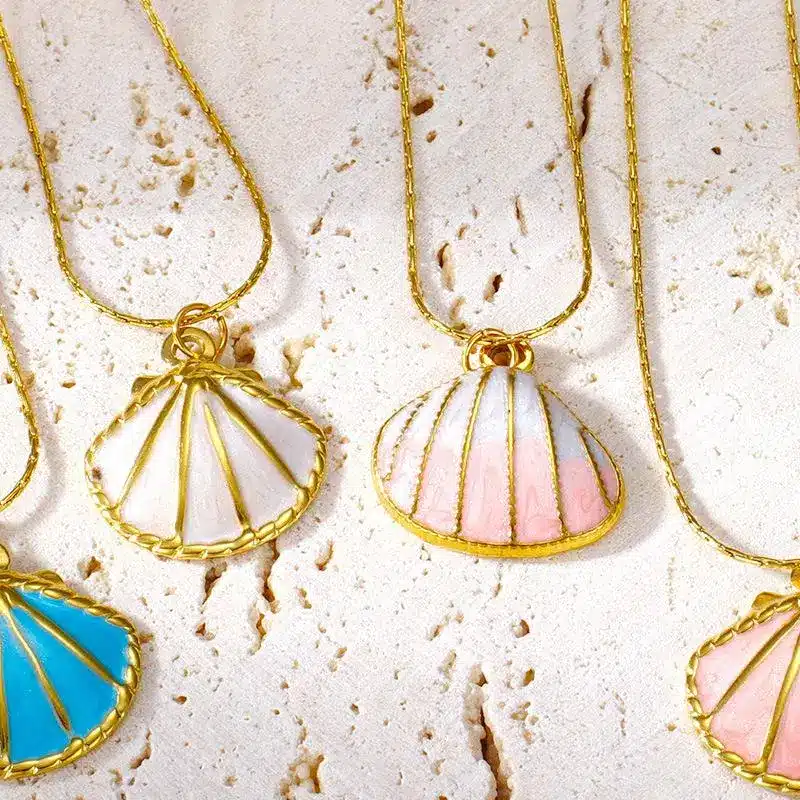The Ultimate Guide to Black Chalcedony: How to Tell Agate from Onyx

Key Takeaways
- Chalcedony is a microcrystalline type of quartz with various types being sought after in the world gemstone market for their distinctive colors and patterns.
- Chalcedony gemstone identification is based primarily on appearance, physical and optical characteristics, and if necessary, laboratory gem testing.
- Other parts of the world, including Africa and Oceania, are significant sources of chalcedony, and responsible mining practices promote local communities and sustainable supply.
- The chalcedony family encompasses famous members like agate, onyx, chrysoprase, carnelian and bloodstone, each having unique characteristics and applications in adornment.
- Buyers need to know about treatments and always request disclosure when buying chalcedony.
- With proper care — gentle cleaning and careful storage — chalcedony stones maintain their beauty and can last a lifetime, for collectors and jewelry lovers around the world.
Chalcedony gemstone identification refers to discovering characteristics that distinguish chalcedony from other stones. In terms of gemstones, chalcedony is a quartz that has a waxy luster, a smooth, almost greasy look and feel and occurs in a variety of pastel tones.
It crystallizes in spherical forms and exhibits no distinct crystals. The majority of specimens are swirled with soft color banding or completely monochromatic.
Gem specialists use visual observation, tactile analysis and simple tests to determine if a stone is chalcedony. Standard processes ensue.
What is Chalcedony?
Chalcedony is a microcrystalline variety of quartz, known as cryptocrystalline quartz. It is distinguished by its fine grain and waxy luster, frequently exhibiting a gentle glow as light glides over its surface. Chalcedony falls into two broad groups: translucent types such as agate and opaque ones like jasper.
The stone appears in many hues, from white and gray to blue, tan and even black. Due to both its beauty and the wealth of variety, chalcedony has become a mainstay in the world gemstone community, prized by collectors and jewelers alike.
A Cryptocrystalline Quartz
Chalcedony consists of microscopic crystals of silica called cryptocrystalline quartz, which are classified as translucent gemstones. You can’t detect the separate crystals without a microscope. They lay close together, creating chalcedony’s signature smooth, even appearance. This versatile gemstone is highly sought after in the gem trade for its unique qualities.
The primary minerals are chalcedony and moganite, with a base of silicon dioxide. This dense structure imparts a hardness of 6 to 7 on the Mohs scale, making it both durable and jewelry-friendly, especially in the form of beautiful chalcedony crystals.
It’s the microcrystalline form that separates chalcedony from other quartz. Unlike clear quartz with its big crystals, chalcedony features such tiny crystals that the stone appears almost soft and waxy. This allows it to exhibit fascinating phenomena, such as chatoyancy (cat’s-eye) or iridescence, which are rarely encountered in other quartz varieties.
Experts identify chalcedony by its compact, uniform grain and translucent effect. The waxy luster is another obvious indication. These features help distinguish chalcedony from glass or plastic simulants with ease, making it a favorite among gemmologists.
Chalcedony may appear beautiful due to this crystal structure. Its smooth surface imparts a gentle sheen, and sometimes, the stones even luminesce under UV light. These qualities make chalcedony so beloved among collectors and designers alike, especially in the realm of gemstone jewelry pieces.
Formation Process
Chalcedony occurs when groundwater rich in silica seeps through rock fissures, frequently from volcanic rocks. Over time, the silica accumulates in pockets and empty spaces, cooling and solidifying into stone. It’s a slow process and can take thousands to millions of years.
Silica is the star. It originates in volcanic ash or in leached, weathered rocks. When water percolates through these rocks, it absorbs silica, which precipitates and fills the voids. This may result in banded agates, or solid nodules.
Temperature, pressure and the chemistry of the water all alter the appearance of chalcedony. For instance, trace elements can impart color—iron makes red, nickel gives green, etc. The slower the cooling, the more likely it is that special optical phenomena like adularescence or fluorescence will appear.
Global Sources
Chalcedony is mined globally. Other significant sources are Papua New Guinea, Angola, Brazil, India and the US. These areas provide both rough and cut stones to the international market.
The stone is located on virtually every continent, with varying hues and designs from each. For instance, Namibian blue chalcedony is renowned for its pale blue tint and Montana agate is sought after for its speckled appearance.
Mining can impact supply. Others use artisan mining, which benefits local populations but restricts production. Big mines can saturate the market and impact prices.
Local mining groups are a big component of the chalcedony industry. They tend to make the stone’s name and introduce new varieties to the world.
How to Identify Chalcedony
Chalcedony, a versatile gemstone, can resemble many stones, making identification crucial. Utilizing a combination of easy screening and specialized testing will enable you to identify this translucent gemstone more securely.
1. Visual Inspection
Chalcedony varies in colors such as white, gray, brown, green. This broad spectrum indicates that color by itself is insufficient. Check the stone’s surface for a waxy or occasionally silky luster—this is a tell-tale sign.
Most chalcedony is semitransparent or translucent. Hold it to the light and see if it passes through, but not transparently. Patterns tend to be soft and blended, not sharp or banded.
Inspect for inclusions or tiny dings within the stone. These may occasionally appear as little dots or streaks. If you own a known piece of chalcedony, place it beside your sample for a side-by-side comparison.
Observing imperfections or surface blemishes may assist. A few stones imitate chalcedony well, so caution is necessary.
2. Physical Properties
Chalcedony is quite hard, between 6 and 7 on the Mohs scale. This gives it a higher hardness than glass and most metals. If you lightly scratch it with a knife, it would not mark it.
Its density, or specific gravity, is 2.59–2.61. If you can get its weight and compare size, you might notice a difference from lighter or heavier stones.
Texture is important. Chalcedony is smooth and cool to the touch, occasionally somewhat greasy. When you break a piece, the break is curved—conchoidal fracture.
Try tapping the stone’s strength; it should not chip or crumble. These tests help eliminate softer or crumbly fakes.
3. Optical Characteristics
Chalcedony lacks flashy color play or iridescence. Its appearance is more stable, with a subdued radiance. The way it handles light—nearly luminescent from inside—gives it apart from glass or plastic.
If you examine the stone’s translucence, chalcedony is never truly transparent but possesses a consistent, foggy appearance. Under a gem microscope, you’ll notice that chalcedony is very finely grained—quartz blended with moganite.
This combination imparts a silky but not glassy appearance. Check to see if it has a white streak when you rub it on a porcelain plate. This is another straightforward but useful optical test.
4. Advanced Methods
Devices such as a refractometer can verify the refractive index, which is a chalcedony fingerprint. Spectroscopy identifies its silica base and eliminates dyes.
Gemologists use polariscopes to observe double refraction or absence thereof. If you want definitive evidence, lab testing is ideal. Knowing how to use these tools, or consulting an experienced gemologist, makes all the difference.
5. Common Imposters
Agate, onyx, and dyed quartz frequently resemble chalcedony. Agate is banded, chalcedony’s color is more uniform. Onyx is typically black and could be heavier.
Keep in mind, though, that treatments such as dyeing can transform a stone’s appearance. Synthetic chalcedony is uncommon but does occur. Be wary of neon colors or bubbles within the stone.
The Chalcedony Family

The chalcedony family encompasses a large number of gemstones made from cryptocrystalline silica. Every kind has varying colors, banding or inclusions. Most chalcedonies are semitransparent or translucent and have a waxy luster. Their colors range from pale gray and blue to green, orange or red.
Understanding the varieties of chalcedony not only enables collectors to identify rare and interesting stones but allows jewelers to select stones for particular designs. Although a few of them are familiar, others are less common, but worth searching out.
Agate vs. Onyx
-
Carnelian is reddish-orange chalcedony. Onyx has linear, parallel bands, typically black and white.
-
Agate are just about any color, sometimes with mossy or arboreal shapes inside. Onyx is predominantly black, white or brown.
-
Agate is sought after for beads, cameos, bowls and inlays. Onyx is commonly used for cameos, cabochons and traditional jewelry.
-
Notable agates: moss agate (green patterns), fire agate (bright rainbow flashes). Common onyx: black onyx, sardonyx (red or brown bands).
Chrysoprase
Chrysoprase is distinguished in the chalcedony family by its vivid apple-green hue, which comes from nickel. Fine chrysoprase is uncommon, particularly with vibrant color and minimal inclusions, so it commands a premium price.
Most of us appreciate chrysoprase for its alleged ability to enhance tranquility and optimism. Jewelry designers employ it for one-of-a-kind creations because of its rare color not often seen in other gemstones.
Carnelian
Carnelian is most noted for its orange to deep red coloration from iron. Ancient peoples used carnelian for seals, beads and amulets due to its appearance and durability.
Today, carnelian remains common on rings, pendants, and beads. To maintain carnelian’s brilliance, keep it away from extended sun exposure and abrasive cleansers.
Bloodstone
Bloodstone is a dark green chalcedony with red spots of iron oxide. For centuries, it was employed in amulets to arrest bleeding and heal wounds.
Bloodstone shows up in legend and lore, so it’s significant to a lot of people. This stone fascinates because of its appearance and heritage.
Other Varieties
Sardonyx, a combination of sard and onyx, features brownish-red and white bands. Chrome chalcedony is vivid green from chrome.
Collectors should know these types, as they can be rare and valuable. Venturing into the realm of lesser-known chalcedonies enriches any gemstone collection.
Beyond the Stone’s Beauty
Chalcedony is a versatile gemstone, beautiful and rich in narrative, intertwining history, culture, and faith, forging its significance beyond mere beauty.
Historical Significance
Chalcedony has been leaving its mark since the Bronze Age, approximately 1800 BC, particularly in the Mediterranean areas. Ancient folk sculpted the stone into cameos and intaglios, utilizing its fine grain for their work. The stone’s hardness, a 7 on Moh’s Scale, made it an excellent choice for functional objects.
Romans especially used chalcedony for seal and signet rings, which indicated status and sometimes acted as personal stamps. In commerce, chalcedony traveled age-old paths, linking traders across distant terrains. Its appearance in Egyptian, Greek and Roman artifacts speaks to its enduring allure.
Roman leaders and Egyptian priests loved chalcedony for its appearance and robustness. Collectors today discover pieces with rich histories beneath them, bridging past palms and ancient souls.
Cultural Symbolism
Other cultures regarded chalcedony as a symbol of peace, truth, or defense. In others it represents fraternity and benevolence, a present for companions or dear ones. I have always loved the stone as it appears in art, its gentle hues evoking tranquility and profundity.
In fiction, authors have employed chalcedony to represent silent power or secret loveliness. Spiritual groups occasionally employ it in ceremonies, thinking it designates a sacred or clean area. If you incorporate chalcedony into your own life, you could discover significance in your own narrative.
Metaphysical Beliefs
As a mineral, many believe chalcedony holds soft energy of serenity. This notion has transcended cultures, turning the stone into a favorite for the tranquility-seeking set. Folks employ chalcedony in meditation, clasping it or donning it to assist with concentration and equilibrium.
While others believe the stone alleviates anxiety or clears the mind, these impacts are not scientifically supported. There are dozens of forms of chalcedony — agate and carnelian, for example — each with its own characteristics. Diving into these can enrich your own rituals or practices with new depths.
Deeper Meanings
Chalcedony, a versatile gemstone, is beyond a stone’s beauty. Its narrative, threaded across history, unites the human, the geographic, and the aspirational.
Gemstone Treatments and Ethics

Chalcedony, a versatile gemstone often treated for color and appearance, significantly impacts its value and authenticity. Understanding these enhancements, along with the importance of ethical sourcing and clear disclosures, empowers consumers to make educated choices about this translucent gemstone.
Common Enhancements
- Dyeing: Used to create bright blue or green chalcedony, which can appear unnatural.
- Irradiation: Sometimes applied to adjust or intensify color.
- Impregnation: Adds substances to boost durability or change luster.
- Heat Treatment: Alters or stabilizes color.
Chalcedony’s appearances shifts with these treatments. Dyed stones present brilliant colors, occasionally overly intense to be natural. Chrysocolla chalcedony, for instance, can fetch $100+ per carat, so treatments and genuineness immediately affect worth.
Untreated stones are generally preferred by collectors who prize authenticity and provenance above pure beauty. Buyers should always be informed about any treatments. Ethical dealers won’t conceal these truths. ALWAYS request disclosure when buying.
Detecting Treatments
Treated chalcedony can exhibit very vivid colors, particularly blue or green stones. Dyed stones often appear pink in a Chelsea filter, which is a red flag for treatment.
A microscope or refractometer can aid in detecting color concentrations or non-natural patterns. Professional gemologists employ these tools to test stones for treatments. An expert opinion guarantees a more precise reading.
It’s useful to learn how to detect them. There are a ton of tutorials and classes for those who want to become better at identifying treated stones.
Ethical Sourcing
Ethical sourcing is crucial for individuals and the earth, especially when it comes to mining chalcedony crystals and other gems. The ethical implications of extracting translucent gemstones like chalcedony are significant. For instance, if you’re collecting petrified wood (which is a form of chalcedony), it’s limited to 250 pounds per person per year for public lands to minimize impact.
Backing fair trade gemstones does promote good mining practices. Ethical jewelers deliver stones along with transparent provenance. Responsible sourcing lets those communities reap the benefits and minimizes the damage.
Seek out vendors with clear sourcing and fair trade validation. Organizations like the Responsible Jewellery Council or Fairmined offer directories of ethical dealers and guidance on sourcing gems responsibly.
Caring for Your Gemstone

Chalcedony, a versatile gemstone, is notable for its durability and ease of care. With a Mohs hardness of 7, this translucent gemstone exhibits resistance to everyday wear. However, appropriate care is essential to maintain the luster of your chalcedony crystals, ensuring the longevity and beauty of your gemstone jewelry.
Daily Wear
|
Best Practice |
Why It Matters |
|---|---|
|
Remove before sports/chores |
Prevents chips, cracks, and scratches |
|
Avoid harsh chemicals |
Protects color, finish, and structure |
|
Wear in sturdy settings |
Shields stone from accidental knocks/drops |
|
Check prongs and clasps |
Keeps the stone secure in its setting |
|
Store separately after use |
Reduces risk of damage from other jewelry |
Chalcedony jewelry is hardy, but not indestructible. Typical dangers are unintentional bangs or chemical exposure in routine work. Harsh cleaning products, perfume and even some lotions can dull the stone or impact color, particularly for dyed chalcedony.
Opting for durable metal settings and taking care when you wear your chalcedony — in, for example, a ring or bangle — reduces the risk of damage from impact or thermal shock. Don’t wear chalcedony when performing tasks that could put strain on the stone.
Cleaning Methods
Basic, consistent cleaning keeps chalcedony looking fresh. Simply employ a soft cloth or brush with mild soap and lukewarm water – no special agents necessary. Steer clear of abrasive pads or powders, which scratch the gem.
Avoid ultrasonic or steam cleaners, which can harm natural and dyed chalcedony alike. Rinse thoroughly and towel dry. When it comes to deep cleaning, opt for light, pH neutral solutions.
Light-colored, dyed chalcedony require extra care – some detergents and high heat may fade or alter the color. Setting a cleaning schedule – like once a month for pieces that are very often worn, for example – combats any such buildup. Professional cleaning and inspection by a jeweler once a year lengthens gemstone life.
Proper Storage
Put chalcedony away in a separate pouch or lined box compartment to prevent it from being scratched by harder gemstones or metal settings. While chalcedony’s toughness prevents it from fracturing, this doesn’t exclude surface damage, particularly when mingled with diamonds or sapphires.
Soft cloth pouches do the job for travel or daily storage and are easy to snag. Store chalcedony away from direct sunlight, which can influence color, particularly in the case of dyed stones.
For long-term storage, a cool, dry place such as a jeweler’s vault with constant temperature is preferred. Designating a special area for your chalcedony jewelry, separate from other gemstones and metals, will maintain both its look and form.
Conclusion
Weaving your way through the chalcedony is going to take a sharp eye and some know-how. The stone dazzles with its waxy luster, delicate hue, and chill caress. Its clan stretches far, agate to onyx, each exhibiting its own fashion. Easy measures maintain chalcedony shining, and truthful merchants guarantee you obtain the genuine article. With some practice and attention, anyone can learn to recognize this rock. Want to dive in further or report your own discoveries! Leave your queries or tales beneath. Each new tip assists the rest of us sift the true from the bogus and keeps the chalcedony love alive!
Frequently Asked Questions
What is chalcedony and how is it formed?
It develops in volcanic and sedimentary rocks as silica-rich solutions chill and solidify, producing a lovely translucent chalcedony with a slick, waxy feel.
How can I identify genuine chalcedony?
Real chalcedony, a versatile gemstone, is waxy in luster, translucent, and 6.5–7 in Mohs hardness, often showcasing even color and no visible crystals.
What are common types within the chalcedony family?
Frequent varieties are agate, jasper, carnelian, and onyx. Each type differ in color, banding and translucency but have in common chalcedony’s microcrystalline structure.
Can chalcedony be treated or enhanced?
Yeah, chalcedony, a versatile gemstone, is occasionally dyed or heat treated for color enhancement, so always request treatment disclosures when buying.
Is chalcedony a durable gemstone for everyday wear?
Chalcedony, a versatile gemstone with a durability rating of 6.5–7 on the Mohs scale, is scratch resistant and ideal for everyday jewelry pieces.
How should I care for my chalcedony gemstone?
Wash your chalcedony crystals with mild soap and water, as this versatile gemstone should be kept away from harsh chemicals and ultrasonic cleaners to maintain its beauty.
Why is ethical sourcing important in chalcedony gemstones?
Ethical sourcing in gemmology means safe work, fair pay, and eco-friendly mining, fostering confidence in responsible practices for quartz gemstones like chalcedony.
Related Posts

Understanding Wholesale Jewelry Pricing and How It Works
Understanding Wholesale Jewelry Pricing and How It Works When people see a ring that costs $6 wholesale and retails for $59, they often

The Art of Shine in Jewelry Polishing and Plating Techniques
Discover how polishing and plating transform modern jewelry with expert techniques for lasting shine and elegant finishes.

Τι Νοιάζει Πραγματικά τους Αγοραστές Ανοξείδωτου Κοσμήματος Εκτός από την Τιμή
Τι πραγματικά νοιάζει τους αγοραστές ατσάλινων κοσμημάτων πέρα από την τιμή ανθεκτικότητα υποαλλεργικά υλικά και μοντέρνο στυλ.
